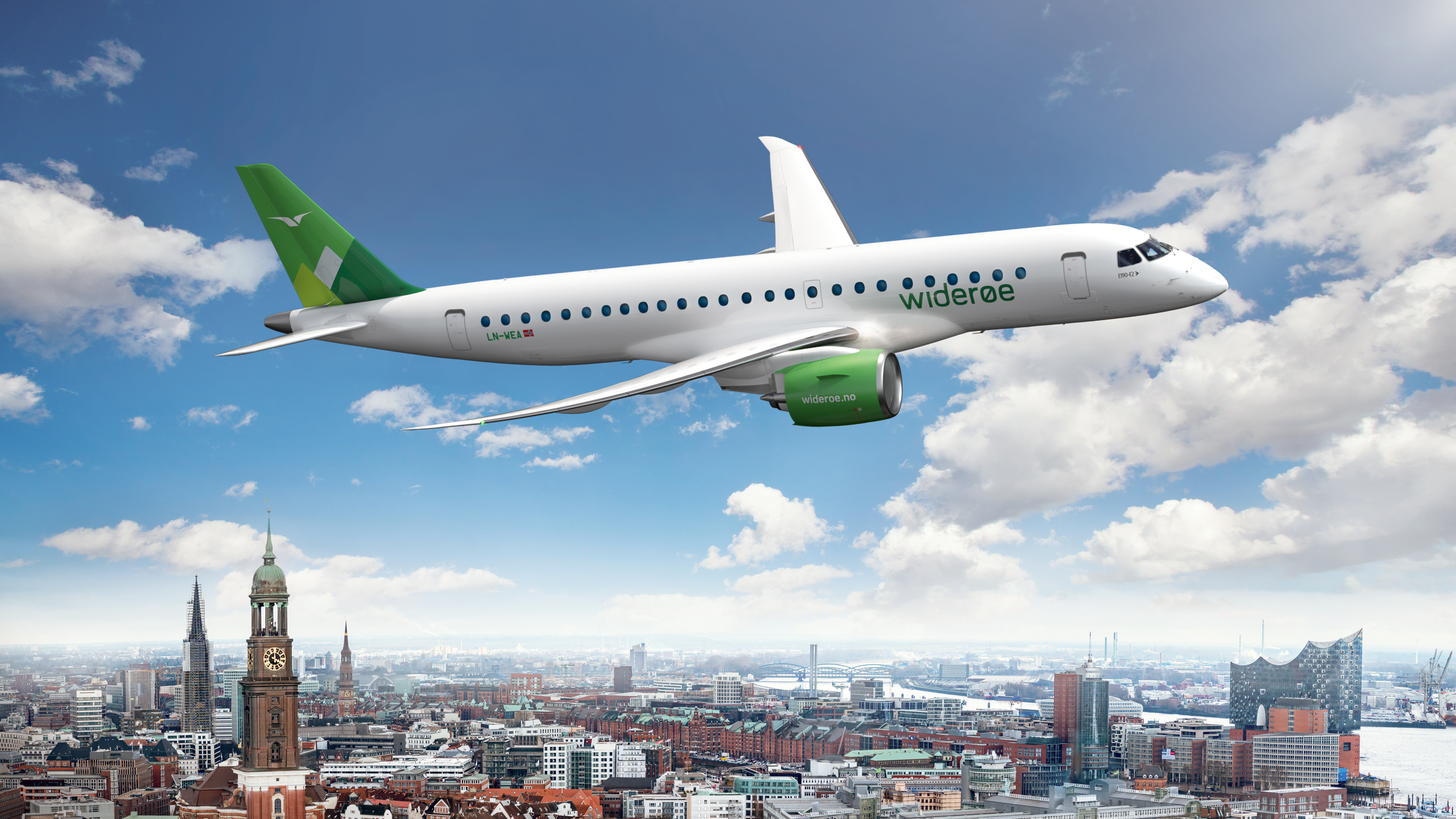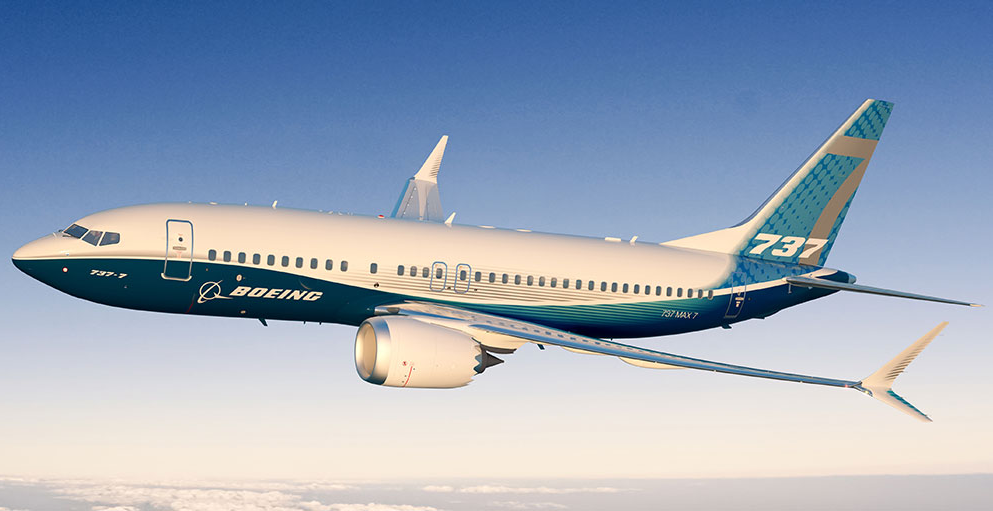Leeham News and Analysis
There's more to real news than a news release.
- Bjorn’s Corner: Faster aircraft development. Part 19. Flight Test Aircraft Assembly.
- Comments on freewall posts are closed for now
- The state of alternative propulsion aircraft? Part 4.
- Boeing CFO Jay Malave: Priorities are debt, investments, then shareholders
- Boeing’s “hangover” of the MAX is over, says former acting FAA administrator who dealt with crisis
Pontifications: Why Embraer downplayed range of EJet
June 18, 2018, © Leeham News: Bjorn Fehrm on Thursday wrote (behind the paywall) that Embraer seems to be selling the E190-E2 short when it comes to range.
Embraer’s published range is 2,850nm. But Bjorn discovered that the range is truly 3,250nm, fully 14% more than the advertised range.
I laughed out loud when Bjorn told me of this discrepancy.
Why would Embraer short-change the E190-E2’s range?
The answer was obvious to me.
Posted on June 18, 2018 by Scott Hamilton
Countdown to Airbus-CSeries deal: boost needed to backlog
Subscription Required
Introduction
May 28, 2018, © Leeham News: Bombardier and Airbus may clear regulatory approvals next month, allowing for consummation of the latter’s acquisition of 50.01% of the CSeries program.
If all works, this will be well in advance of the Farnborough Air Show that begins July 15. Industry eyes will be on the FAS to see what orders might be announced by Airbus for the CSeries, which reportedly may be renamed the A210 and A230 for the CS100 and CS300 respectively.
Airbus for the CSeries, which reportedly may be renamed the A210 and A230 for the CS100 and CS300 respectively.
As May fades to June, Bombardier has beefed up its skyline quality, but there are some orders that are in doubt, including a big one for 40 airplanes.
Summary
- No sales since Dubai Air Show.
- Airbus-CSeries deal expected to close next month.
- Three questionable orders affect nearly 20% of backlog.
- Farnborough Air Show will be keen to watch for news.
Posted on May 28, 2018 by Scott Hamilton
Airbus, Bombardier, CSeries, Delta Air Lines, E-Jet, Embraer, Farnborough Air Show, Frontier Airlines, Premium, United Airlines
A210, A230, Airbus, Bombardier, CS100, CS300, CSeries, EJet, Embraer, Frontier Airlines, Gulf Air, JetBlue, Odyssey Airlines, Republic Airways, Spirit Airlines, United Airlines
Embraer gears up for E2 delivery; a look at the 100-150 seat sector demand
March 31, 2018 © Leeham News: The first Embraer E2 jet will be delivered April 4, to Norway’s Wideroe Airlines.
The E190-E2 seats 114 passengers in one-class, 29-inch pitch and 106 at 31-inch pitch, putting it at the low end of the 100-150 seat sector that is often maligned as a Bermuda Triangle for airplanes of this size.

Wideroe of Norway takes delivery of the firzst Embraer 190-E2 April 4. Photo: Embraer
The E190-E2 competes with the Bombardier CS100, a 110-seat airplane in one-class. Neither Airbus nor Boeing have a competing product. Each offers a larger airplane in the 125-150 sector, the A319neo and 737-7 MAX respectively. Embraer and Bombardier offer the E195-E2 and CS300 in this sub-sector.
Posted on March 31, 2018 by Scott Hamilton
Embraer thinks a business case can be made for turboprop, but nothing soon
Subscription Required
Introduction
March 12, 2018 © Leeham Co.: Embraer isn’t planning any new airplane any time soon, but studies about a turboprop and an electric airplane are underway.
The current focus is on introducing the Ejet-E2 into service, however. The E190-E2 goes into service next month. The E195-E2 follows next year and the E175-E2 in 2021.
Studies about the electric plane, with 50 passengers or less, perhaps are more esoteric than pending reality. Airbus and Boeing also are studying this concept.
The prospect of a turboprop may be more rooted in reality, however.
Summary
- Current turboprop designs are aging.
- Bombardier’s exit from the turboprop market is considered likely.
- Tough business case seen working with Bombardier exit.
- The ATR is too small for some airlines.
Posted on March 12, 2018 by Scott Hamilton
Embraer ponders new, smaller jet
Subscription Required
Introduction
March 5, 2018, © Leeham Co.: News emerged last week that Embraer is considering a new jet family smaller than its current E2 line.
This would replace the E170, which Embraer decided not to upgrade to the E2. The E170 hasn’t sold well in recent years, as the E175 became the preferred airplane in Embraer’s sub-90 seat market.
in recent years, as the E175 became the preferred airplane in Embraer’s sub-90 seat market.
Embraer recognizes it needs a second family of airplanes to complement the E2. It’s been considering reentering the turboprop market, but demand is limited.
Restarting a sub-76-seat jet is not without risk, however.
Summary
- Turboprop market is small over 20 years.
- 60-99 seat market is a bit larger, but with competitors.
- Business cases for each are challenging.
Posted on March 5, 2018 by Scott Hamilton
Professionals see two types for Middle of the Market sector
Subscription Required
Introduction
March 1, 2018, © Leeham Co. Three industry professionals raised the question whether the Middle of the Market sector requires one aircraft type or two.
One raised the prospect Boeing might have to undertake concurrent aircraft development, as it did with the 757 and 767.
Richard Aboulafia, a consultant with The Teal Group, Ron Epstein, aerospace analyst for Bank of America Merrill Lynch and Kevin Michaels, president of AeroDynamic Advisory, made their remarks at the annual conference of the Pacific Northwest Aerospace Alliance last month in Lynnwood (WA).
Summary
- Low-cost Embraer engineers may play a role in Boeing’s development of the NMA.
- One consultant sees two distinct NMA aircraft.
- Boeing’s vertical integration of the supply chain may make sense only with two concurrent of consecutive airplane programs.
Posted on March 1, 2018 by Scott Hamilton
Pontifications: NMA, Boeing-Embraer headline Singapore Air Show
Feb. 12, 2018, © Leeham Co.: The Singapore Air Show last week produced little in the way of new orders from the Big Four airframe OEMs. ATR announced a few deals and Embraer announced a letter of intent for the KC-390 multi-role tanker-transport.
The headline news revolved around the what-ifs: Boeing and the New Midrange Aircraft and Boeing and the link-up with Embraer.
Let’s look at the NMA first.
Posted on February 12, 2018 by Scott Hamilton
Next Sukhoi Superjet is a 75 seater
By Bjorn Fehrm
February 7, 2018, ©. Leeham Co: The President of Sukhoi Civil AirCraft (SCAC), Alexander Rubtsov (who is also the Sales and Marketing Manager of the civil aircraft division of Russia’s United Aircraft, UAC), told Flight Global at the Singapore Air Show there has been a decision to develop a 75-seat version of Sukhoi SuperJet (SSJ).
Sukhoi and United Aircraft have studied whether to develop a larger or smaller version of the SSJ. A Russian order for 100 of the smaller model tipped the decision to the 75-seat model.
Posted on February 7, 2018 by Bjorn Fehrm
Boeing aims for half of 100-150 seat sector with 737-7
Jan. 24, 2018, © Leeham Co.: Dublin, Ireland: Boeing sees the 100-150 market sector as 10%-15% of the 20-year single-aisle market demand, or about 3,000-4,500 aircraft.

This compares with the 6,000-7,200 forecast by Bombardier.
Other companies fall within the 4,000 range.
Boeing doesn’t specifically segment the sector in its Current Market Outlook the 20-year forecast for regional, mainline, twin-aisle and cargo aircraft. However, Robert Michael, senior manager of product marketing for Boeing, disclosed the figure at the 20th Annual Airfinance Journal Conference Monday.
Michael said he expects the 737-7 MAX to capture about half the demand.
Posted on January 24, 2018 by Scott Hamilton
Pontifications: 2018 is a year of Transformations
Jan. 8, 2018, © Leeham Co.: This is going to be a year of transformations.
This might be viewed with puzzlement by some. After all, only minor-modification models will be entering service this year: the Airbus A350-1000, the Boeing 737-9, the Airbus A319neo and the Boeing 787-10. The first flight of the 737-7 should occur.
Flight testing continues for the Mitsubishi MRJ90, the COMAC C919 and Irkut MC-21.
The proposed deal between Airbus and Bombardier should receive government approvals this year. Talks between Boeing and Embraer may or may not result in a combination of some kind.
The Big Deal, however, resides in Everett (WA).
Posted on January 8, 2018 by Scott Hamilton
Airbus, Airfinance Journal, Boeing, Bombardier, China, Comac, CSeries, E-Jet, Embraer, Irkut, Leeham Co., Mitsubishi, MOM, New Midmarket Aircraft, NMA, Pontifications
737-7. 737-8, A321neo. a321neo Plus. 777X, Airbus, Airfinance Journal, Boeing, Bombardier, Comac, Embraer, Irkut, Mitsubishi, New Midmarket Airplane, NMA. MOM, Southeast Aerospace and Defence Conference





